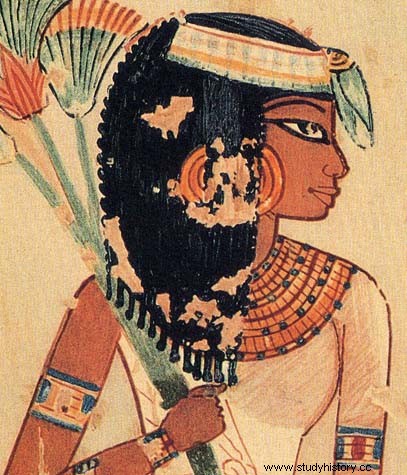
Papyrus depicting an Egyptian woman. The Egyptians made sanitary pads for the menstrual cycle in various ways
The papyrus, omnipresent in the culture and society of Ancient Egypt, it also helped women in "those days" by acting as a rudimentary but indispensable absorbent (https://www.pilloledistoria.it/9206/storia-antica/gli-assorbenti-dellantico-egitto).
The Egyptians, however, also used other types of pad , both internal and external:rolling cotton and by wrapping it with a string to keep it firm and compact they obtained the former, while the latter consisted of simple pieces of cloth often made of linen (fresh and natural fabric, linen was ideal in a land like Egypt, constantly oppressed by a scorching and sometimes unbearable heat).
For centuries menstruation were considered a taboo to talk about as little as possible, which is why even historical information on the subject is scarce, however the papyrus Ebers (https://it.wikipedia.org/wiki/Papiro_Ebers), containing medical prescriptions in its entirety and therefore illuminating for us about the knowledge of Egyptian medicine , also offers some indication of the female cycle.
Among other things, we also learn from it of the existence of a type of absorbent with contraceptive properties made of breadcrumbs mixed with acacia .
